Scott B. Pruden's Blog, page 14
May 21, 2013
Meme-ography
May 16, 2013
And Speaking of Lego Stop-Motion …
I wrote the other day about how the work of the late Ray Harryhausen inspired me to make my own little Super 8 stop motion films with Legos. I have to say, however, that mine paled in comparison to this shot-by-shot rework of Casino Royale, the 2006 James Bond reboot with Daniel Craig.
As a sucker for well rendered stop-motion and a longtime James Bond fan, I just had to share.


May 14, 2013
Thanks to Uncle Ray
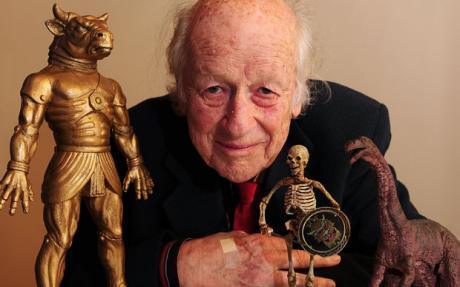 Those of us who are artists have lots of aunts and uncles to thank for what we do.
Those of us who are artists have lots of aunts and uncles to thank for what we do.
I tend to claim anyone who’s had a measurable effect on my creative life that way. It provides what might be a false intimacy, but it accurately reflects the way I feel about those writers, filmmakers, musicians and visual artists who have given me some inspiration and/or motivation along the way.
The man pictured above is one of them. His name is Ray Harryhausen, and he is generally regarded as the greatest stop-motion animators to ever have his work committed to film. If you’re not into the movie (particularly fantasy and science fiction) version of inside baseball, you probably don’t recognize him or his name, but you’ll surely recognize his work.
That’s from The Golden Voyage of Sinbad, which came out in 1973. It was one of the first movies I clearly remember seeing in a theater. And I even remember which theater, because it was one of only two in my hometown of Camden, S.C. Judging by my memory and the movie’s year of release, I was probably five years old and accompanied by, of all people, my mom (thanks, mom!)
Talk about shock and awe. I remember being stunned by the special effects, then even more stunned when, as an older kid, I learned how they were achieved – small models where moved a tiny fraction, then the movie camera shot a frame.
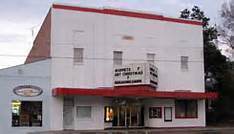
The Little Theatre, still holding down its original spot on DeKalb Street in Camden, S.C.
That process was repeated thousands of times until, when run at regular speed, the film gave the illusion of the model actually moving on its own.
Ray Harryhausen died last week at 92, and left an enduring legacy of inspiration that hundreds of other behind-the-scenes film folks should envy. Guys like George Lucas and Steven Spielberg – no slouches in the special effects movie department, cite Uncle Ray and his work as major inspirations.
And really, who couldn’t be inspired? I’m one of the gazillions of kids who even tried to reproduce Harryhausen’s work in our own small fashion. After getting a Super 8 movie camera as a Christmas gift when I was 10 or 11, I quickly went to work creating stop-motion movies of my own with Lego astronauts and cardboard backdrops painted black, hole-punched and back-lit to represent the inky void of space.
For a long time now, computer generated images (CGI) has taken the place of stop-motion animation in rendering fantastic monsters on the big screen, for better or worse. And I’m sure new generations of computer animation and effects efforts are being inspired with each new summer blockbuster or superhero spectacle.
But I can distinctly trace back to Harryhausen a couple of traits that worked for me later in life and, specifically, as a writer.
If you’ve ever actually tried to do stop-motion animation, the thing it perhaps requires most of all is patience. Creating 30 seconds of screen time can take days in the studio, so there’s really no way to rush. Rushing, in fact, would equal disaster. As a result, through my own little Lego efforts, I learned to take it slow and do it right.
There also is a certain amount of obsessive compulsive disorder that goes into being the kind of perfectionist that works in such a slow medium. I’m not sure if that was built into my psyche or developed later, but having a little OCD never hurt a newspaper copy editor, either.
May 6, 2013
Updating My Style
I did something last week that had been unthinkable for the first 13 years of my working life – ordered my own copy of the Associated Press Stylebook.
Unthinkable because in every newsroom in which I landed from the moment I started in the newspaper business (including my university paper, The Gamecock), I was provided with one as a part of the job.
The one you see here is old – ancient in terms of stylebooks – having the distinction of being the first and (up until last week) only one I had actually paid money for. It was purchased in 1987 at the University of South Carolina Book Store at the beginning of my sophomore year when I decided to make the switch from broadcast journalism to news-editorial.
After I graduated, it sat on a number of bookshelves across the country but rarely got pulled down because in the place I really needed it – the newsroom – there was always a more recent version sitting on my desk.
So now, 26 years later, I figured that it was time to refresh things a bit. The new version arrived last Friday and just paging through it I was stunned by how much has really changed.
In 1987, having a personal computer in one’s dorm room was a luxury (I had an Apple IIC with a thermal printer). There was no Internet as we know it (that would take another decade to emerge) and all the reporting one did was in person or over the phone. Social networking didn’t exist. As such, there was no reason to focus on anything other than what we now regard as “analog” journalism.
The new version of the AP Stylebook is heavy with new (and not so new) digital-age references and style points, including how to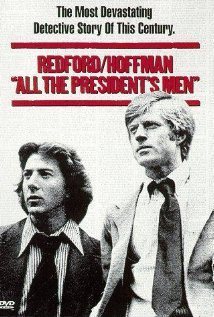 approach sources via e-mail, Twitter and Facebook. I love that today you can just cyber-stalk sources, where back in the day there were lots of editors telling lots of young reporters, “Sit in that bozo’s office until he comes out for lunch and get me that quote.”
approach sources via e-mail, Twitter and Facebook. I love that today you can just cyber-stalk sources, where back in the day there were lots of editors telling lots of young reporters, “Sit in that bozo’s office until he comes out for lunch and get me that quote.”
It’s a stark reminder that between the time newspaper film classic All the President’s Men came out (1976) and when I graduated from college in 1991, nearly all that had changed in the “modern” newsroom was the arrival of clunky, pain-in-the-ass computers with green-on-black CRT displays that still required 12-character strings of code just to format a headline.
Simply the fact that you can now subscribe to digital versions of the Stylebook is a big indicator of how much has changed. I remember thinking during the internet boom of the late 1990s that an online Stylebook would be incredible. Now you can access it on your smartphone – something that very few of us anticipated.
So, with my new edition in hand I’ll study up and try to catch up on all the “official” bits that I’ve missed by not having been in a newsroom for nearly 10 years. The old one, however, will stay, simply because it now serves as a great little artifact and time capsule of where we once were and how far we’ve come.


April 26, 2013
99 Problems, But A Witch Ain’t One
Throughout my life, I’ve been more of a fan of performing in stage musicals than seeing them.
But since my wife wanted to see a show for her birthday this year, I was just happy that she had to pick something other than Rent, which we saw three times in a row over the course of about five years. So Wicked it shall be, and we get to enjoy it with our 9-year-old son and my sister and brother-in-law, too.
And I feel pretty sure (and am exceptionally excited by the prospect) that no one in this show will be a heroin addict or suffering from AIDS.


April 24, 2013
The Art of the Interview
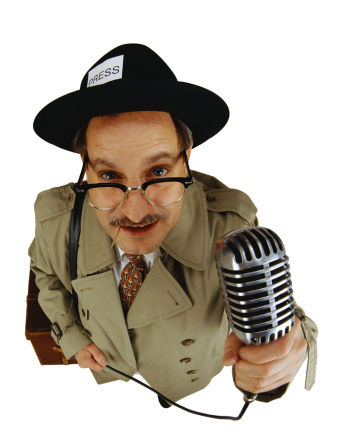 Back when I worked full-time in newspapers, I was occasionally called upon to do what were referred to as “brown baggers” – mini seminars that could take place over a lunch hour – as well as speak to visiting students during journalism-related events involving local high schools.
Back when I worked full-time in newspapers, I was occasionally called upon to do what were referred to as “brown baggers” – mini seminars that could take place over a lunch hour – as well as speak to visiting students during journalism-related events involving local high schools.
At several of these, I was asked to discuss interviewing techniques. It’s been a while since I offered any advice on this, but recently I was asked by a young colleague at one of my copy writing clients to offer some tips on getting a good interview. Here’s a slightly altered version of our exchange.
Dear Scott:
I hope this email finds you well. I am an intern working on my first story and I wanted to reach out to you to see what strategies you may be able to suggest for successful interviewing.
Are there certain questions which you find elicit quote-worthy responses? Do you utilize any applications to record interviews? If there is any other insight you have to share, it will be greatly appreciated!
Thank you,
A.
Dear A:
I’m a big proponent of the “first date” approach to interviewing. I gather whatever background I can on the topic I’m going to be discussing or the person I’ll be interviewing (just like you’d Google stalk a potential date – not that I would EVER do that, of course). Going in knowing just enough to be dangerous allows you to ask intelligent questions but still not sound like you know everything about the subject already.
I also don’t prepare a list of questions in a formal fashion. I know what I’m going to ask based on my research or direction from the editor or project manager. I’ll often write a list of cues, but I prefer for interviews to take a very organic course and be very conversational. Rigid lists of questions don’t usually allow for that. As the “first date” label suggests, you’re trying to express some genuine curiosity in what the interview subject has to tell you, so I phrase my questions accordingly.
This works particularly well with “regular folks.” People who work in government or at executive or managerial jobs are often used to speaking in front of others or being interviewed, but “civilians” – regular people who usually don’t find themselves the subject of an interview – are often suspicious of you or unfamiliar with the process, which makes interviewing (particularly over the phone) a bit trickier. Therefore it’s easier to just get them talking about the subject at hand and redirect the conversation if necessary.
You’ll find that this is a great method to generate “quote worthy” comments, since interview subjects feel more comfortable if they’re just having a chat as opposed to undergoing an interrogation. The job of mining through your notes to find that standout quote is your job, but if I hear something special during the interview, I’ll usually highlight it somehow to remember.
Also, don’t let the interview peter out at the end. So many times I’ve come to the “end” of an interview and had subjects start asking me about myself. I’m always willing to share a little, and this frequently cues them to tell a story about the topic at hand that will contain either A) the brilliant, standout quote, or B) the touching, hilarious or otherwise relevant anecdote that would make a perfect lede to the story.
As for recording, I usually don’t find it necessary for quick turnaround work. I have the advantage of having come out of newspapers, where speed is key. I type my notes as the interview subject is speaking, and make sure to use a headset (I use a Bluetooth earpiece with my smartphone) for the interviews so both hands are free and I don’t have to worry about the phone slipping off my shoulder mid-conversation. It never hurts to create an improvised shorthand for yourself so you don’t have to type out every single word.
I do have an Olympus digital recorder for in-person interviews and an app on my phone that allows me to record phone calls (Smart Voice from Google Play – I’m sure there’s a comparable iPhone app), but recording interviews has a tendency to make me lazy with note taking, then I just have to go back and waste more time listening to the recording when I’d rather just start writing straight from my typed notes. I might only use it for someone who I know is a VERY fast talker or for a story that I know will be longer form and will take more time anyway.
For those of you who are in (or have been in) the journalism biz, what did I miss? I’m all too aware that this didn’t cover more confrontational interview situations, so what suggestions would you offer in that regard? Let me know in the comments thread. Thanks!


April 18, 2013
Waiting for Superman
For all the good in my life every day, the last week has been challenging. “Too many difficult conversations,” I told my wife last night. ”I think I’m done with difficult conversations for a while.”
Then I saw this. I wonder what kind of sap I am that I find it hard to let emotions flow at times of real crisis, but get choked up by the decidedly non-campy, non-cheesy trailer for the upcoming Superman reboot, Man of Steel.
But then I remember that the largest tragedies come down to small things. Things like fathers and sons. Things like finding who you are (even if who you are isn’t an extraterrestrial superhero). And things like hope.
I know this film (and most of those that I love) are fantasy. The only bases in reality they have are the emotions they can represent and manifest. So I’ll vow to share this movie with my son when it comes out. Then, for a brief moment escaping the summer heat, we’ll enjoy the illusion that no matter how bad things get, there will be some incredibly powerful and benevolent force that will protect us.
And I’ll put my arm around him and remind him that in the absence of a man of steel, that job – at least where he, his mother and sister are concerned – will be up to me.


April 16, 2013
This is Boston
 I’m thinking of Boston today. The TV is off, the news is silent, so I’m focusing on the above image to put those smoky, gory pictures and videos out of my head for a bit.
I’m thinking of Boston today. The TV is off, the news is silent, so I’m focusing on the above image to put those smoky, gory pictures and videos out of my head for a bit.
I can’t say I’ve spent too much time in Boston. There was the obligatory visit as a child during my family’s two-week summer tour of significant East Coast historical sites. Then, many years later, I went there to do a travel story for an online magazine.
That magazine – despite promises to the contrary – didn’t amount to much in market share or money. But that story and the time I spent in Boston have lingered in my mind since the events of yesterday at the finish line of the Boston Marathon.
As a writer (and former newspaper journalist) in this world dominated by the immediacy of social media, it’s a challenge to respond to everything as fast as everyone else and with any amount of depth.
In the absence of some brief message of condolence, sympathy or outrage via Facebook or Twitter, it’s often hard to form coherent thoughts in the face of tragedy like this. Some people come off sounding trite. Some just sound like assholes. Others, like comedian Patton Oswalt, sit down and compose a bit of impromptu poetry without even realizing it.
I was where many people were yesterday afternoon – neck deep in the commitments of my day. Kids home from school, karate lessons and dinner preparation were all taking place as I tried to answer questions from my 9 year old about what was happening and why. It wasn’t until the kids were in bed that I was able to catch up on the full extent of the horror.
I reserved my response to those closest to me – my wife and my son. This morning, when my 5-year-old daughter saw the newspaper photos, I had to gently explain what had happened without getting too explicit. This after having already had to deal with school disciplinary issues and the illness of a dear friend.
My heart was not in sharing thoughts with the world but with drawing the ones I love close to remind myself of what is good. A hug from your child. A kiss, sweet with therapeutic wine, from one’s spouse. Sitting down to dinner and the blessings of the small portion of abundance we share in our country. Close friends who rally together for each other, despite the constraints of geography.
Tragedies like yesterday’s bring us together, too. With Boston’s place in American history and runners from every part of the nation, the entire country had some stake in what happened.
But truly, we have a stake in what happens everywhere every day. You don’t love your kids only when they’re good. You don’t care for friends only when they’re healthy. But it’s frequently those bad moments that highlight how deeply we feel about the people and places in our lives.
It saddens me that it takes something terrible to bring us together. So look away from the news for a moment and take a look at the picture above. The graphic images of Boston in the news are what we see right now, but that lovely low-rise city poised on the river – that is the real Boston.


April 4, 2013
The Critic

Roger Ebert, the way most of us remember him. In recent years his face was disfigured by multiple surgeries for cancer, but he never lost his drive, his wit or his motivation to write about movies.
For many of us who grew up in the hinterlands, where we were lucky if the local newspaper carried movie advertising, Roger Ebert and his TV partner Gene Siskel were frequently the first exposure we had to film criticism.
Thanks to PBS and their show “Sneak Previews,” it was possible to get the opinions of two erudite, educated men whose joyful duty was to go to the movies, then come back and tell us whether those movies were any good.
As a result, this young fellow got to find out about many movies he wouldn’t see until much later, and also grasp the ins and outs of what “film critics” actually did. For these were real people, and they obviously had real (and legitimate) jobs at newspapers. How cool was that? The were the kindly uncles giving us all movie advice, rather than the harsh, cosmopolitans like Pauline Kael, who wrote from on high at the New Yorker (which was not well stocked at small-town Southern newsstands in the late 1970s, as you might imagine).
But even if I’d known to look for Kael’s work, I probably would have liked Roger Ebert’s better. He seemed like a kindred soul – the nerdy kid who loved the magic of the darkened theater.
Ebert died today at the at of 70, just a day after announcing that he would scale back on his still prodigious level of productivity. Even ailing, he wrote books, blogged regularly and still reviewed movies. He hand-picked the critic team put in to cover for him at the Chicago Sun Times, his home newspaper. He was in the midst of preparing to host his own film festival. That is a hell of a way to go.
All of us who have ventured into film (or music or theater) criticism since watching “Sneak Previews” and its various later incarnations owe Mr. Ebert a great debt, as he influenced all of us in one way or another – sometimes just by proving that there were successful people who actually did it.


April 3, 2013
God Bless Allyson Bird, For She Speaks the Truth
A few weeks ago I wrote about why going into journalism is a great career choice for people who want to write for a living but aren’t sure how to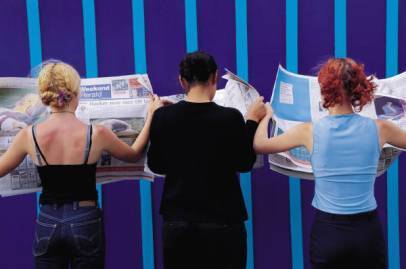 actually translate that into rent and grocery money.
actually translate that into rent and grocery money.
What I might have glossed over is the fact that today, possibly more than ever, it is one of the lowest paying, most thankless jobs out there. You will be called upon to do twice the work of normal humans for about a third of what most college-educated professionals are paid. It is stressful, relentless and exhausting.
No one has summed up the negatives of the field lately better than Allyson Bird. Allyson is a fellow University of South Carolina journalism school alum who distinguished herself in her undergrad years and went on to work at the highly-regarded Post and Courier, the major newspaper in Charleston, S.C.
Full disclosure: I attempted on numerous occasions early in my newspaper career to get a job at the Charleston paper, to no avail. While you don’t hear much about it outside Charleston, it’s a fine paper in a spectacular old city and generally considered a plum gig.
So when I received the USC J-School alumni newsletter that referred to her blog Sticky Valentines (named after a line in the Elvis Costello song “Alison” – which only increased her cachet with me), where she wrote at length about why she, not yet out of her 20s, was leaving journalism, I was intrigued.
It turns out that a decade apart, Allyson and I shared many of the very same concerns about the newspaper world and our place in it – specifically, how we would continue to survive the business in the face of increasing work demands and ever diminishing returns. She did what I attempted to do on a number of occasions – left the business and found a non-news job that let her put her skills to work and afford something other than a four-person apartment share and Ramen noodles.
I’ve actually written before on this same topic in response to a column by Connie Shultz, a Pulitzer Prize-winning syndicated columnist formerly with the Cleveland Plain Dealer and now a columnist for the Parade magazine Sunday newspaper supplement. In it, she lamented the dearth of young people going into journalism, with many of them saying they would prefer to go into marketing, advertising or media relations. She expressed horror that j-school students would opt for “The Dark Side.” I, however, was not surprised at all.
I replied to her column via the Poynter Institute comment thread by noting that her outrage was silly, because for a college graduate – even one devoted to the cause of truth – to expect no more in her paycheck by her third job than a Burger King management trainee would is a travesty, and that until newspapers learned to pay people like the college-educated, highly skilled individuals they are, the trend would continue.
So as a counterpoint to my earlier blog entry, I invite you to read Allyson’s thoughts and consider them well before you jump into journalism as a long-term career. Per my earlier statements, I still heartily stand by the news biz as a great entry point for young writers. But as Allyson notes, it might not be the kind of career you want to stay with for the rest of your life.
Oh, and a little something for my fellow Gamecock, because I simply couldn’t resist.












